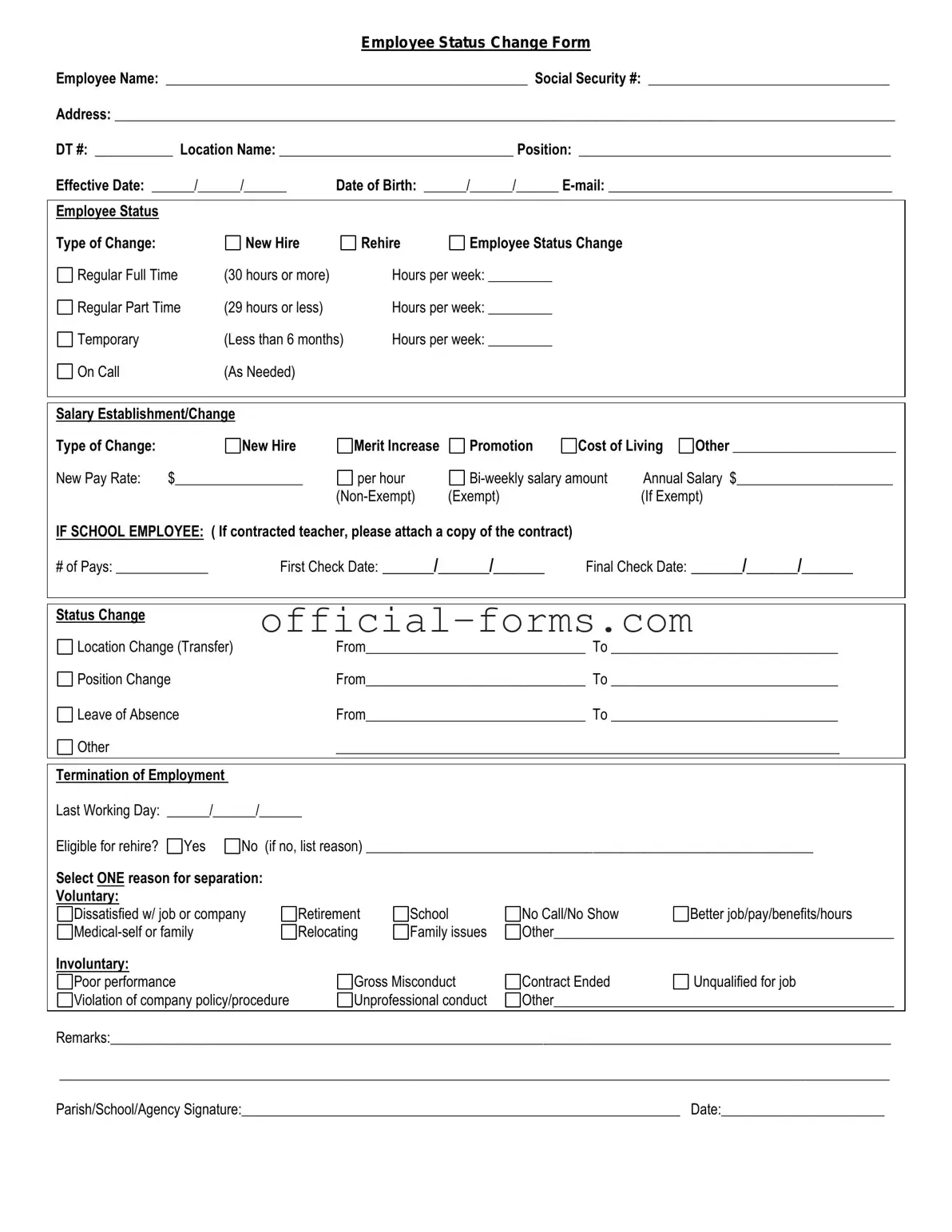Blank Employee Status Change Form
The Employee Status Change form is a crucial document used by organizations to officially record changes in an employee's status, such as promotions, transfers, or terminations. This form ensures that all necessary updates are communicated effectively within the company, maintaining accurate records and facilitating smooth transitions. Understanding how to properly complete and submit this form can significantly impact both the employee's experience and the organization's efficiency.
Open My Employee Status Change Now
